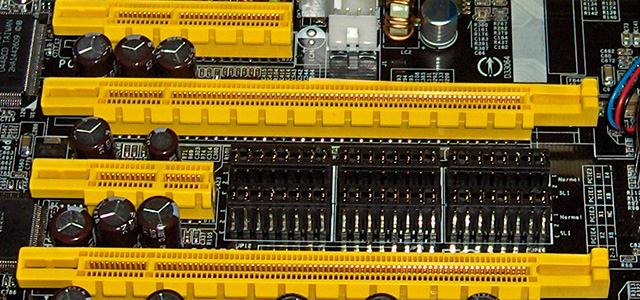
In our last post, we discussed the PCIe bus and the upcoming PCIe 4.0 but we only briefly touched on PCIe lanes themselves. So what are PCIe lanes and why do they matter? Read on to learn more.
What are PCIe lanes?
Without getting super geeky here, PCIe lanes are essentially how the PCIe devices communicate to the system through that PCIe bus. Similar to how multi lane highways work – with higher traffic areas needing more lanes to handle the volume – certain components require higher throughput, so require more lanes. You may see lane sizes referred to in terms of width but most commonly you’ll see “by” as in PCIe “by 8” or “x8.” Both of these denote eight PCIe lanes.
How many PCIe lanes do I need?
Each PCIe device requires a certain number of lanes to operate at full capacity. Devices like graphics cards typically require x16 while slower devices like USB cards are fine at x1. Generally speaking, you want to make sure you have enough PCIe lanes to properly handle the TOTAL PCIe requirements for the devices you’ve chosen, so the answer to this question depends on your specific PC build. A brief list of common PCIe devices and the number of lanes they require are below for reference, but it’s good practice to verify these numbers with your specific components. Pick your devices, then total up the number of lanes required.
| Component | Lanes |
| NVIDIA Graphics | 16 |
| AMD Graphics | 16 |
| PCIe Storage (Intel 905p, Samsung 970 Pro, etc) | 4 |
| RAID cards | 4 to 8 |
| USB cards | 1 |
| 802.11 Wifi | 1 |
How many PCIe lanes with common processors
The number of available PCIe slots and types depends on the motherboard, but the total number of available lanes depends on the processor and chipset itself. Here is a list of common processors and the number of lanes each offers. When configuring a build, make sure you’re choosing a processor with enough PCIe lanes for your chosen devices.
| Intel | AMD | |||
| Processor | PCIe Lanes | Processor | PCIe Lanes | |
| Intel Core i5 8600k | 16 | AMD Ryzen 7 2600X | 20 | |
| Intel Core i7 8700 | 16 | AMD Ryzen 7 2700X | 20 | |
| Intel Core i7 8700k | 16 | AMD Ryzen 7 2700 | 20 | |
| Intel Core i5 9600k | 16 | AMD Ryzen 7 2600 | 20 | |
| Intel Core i7 9700k | 16 | AMD Threadripper 1900X | 64 | |
| Intel Core i9 9900k | 16 | AMD Threadripper 1920X | 64 | |
| Intel Core i7 9800X | 44 | AMD Threadripper 1950X | 64 | |
| Intel Core i9 9900X | 44 | AMD Threadripper 2920X | 64 | |
| Intel Core i9 9920X | 44 | AMD Threadripper 2950X | 64 | |
| Intel Core i9 9940X | 44 | AMD Threadripper 2970X | 64 | |
| Intel Core i9 9960X | 44 | AMD Threadripper 2990WX | 64 | |
| Intel Core i9 9800X | 44 | |||
What if I run out of PCIe Lanes?
So you’ve done your homework, totaled up the number of lanes you need but either your motherboard doesn’t have enough slots or processor doesn’t have enough lanes. Well, to return to our highway analogy, what happens when too many cars use too few lanes? Same thing here. But that doesn’t mean your system is destined for a traffic jam. Most graphics cards run optimally with 16 lanes, but they will run with 8 if needed, though obviously not as well as when running at x16. This downclock happens in the background when more lanes are needed than are available without having to take any action to initiate, so aside from the performance hit, you’d likely not even realize it happened. After all, running a graphics card at x8 is not an ideal situation if you’re trying to maximize performance, but may be better than having to upgrade your processor.
Concerned your Velocity Micro build does not have enough lanes? Our team is here to help.
Josh Covington
Latest posts by Josh Covington (see all)
- RTX 6000 Pro Blackwell - July 1, 2025
- What is CUDIMM? - January 29, 2025
- X870 vs B850: Choosing the Right Motherboard for Your Build - January 17, 2025
I see that the lanes needed for each type of device are based upon PCIe 4.0 do you have a chart for older and newer PCIe version (1-6)?
Will the number of lanes go down by 50% for PCIe V5 given they throughput usually doubles?
Thanks!!!